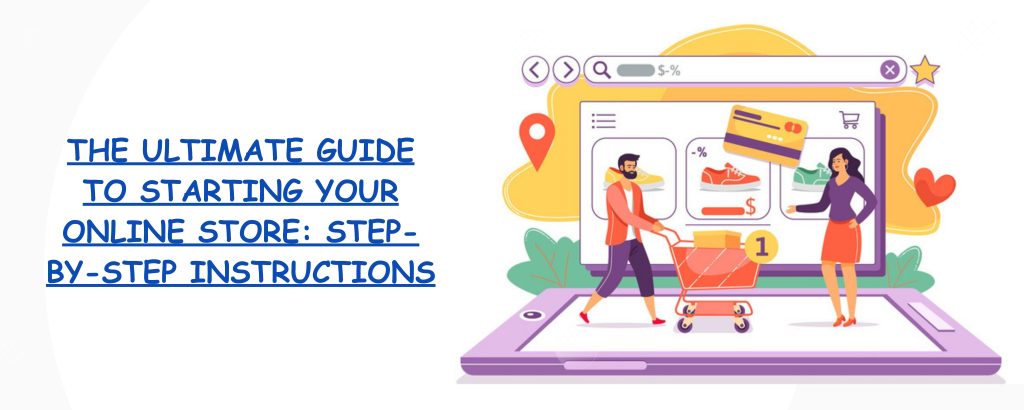In today’s digital age, starting an online store has become more accessible than ever. With the rise of e-commerce, entrepreneurs have the opportunity to reach a global audience and turn their passion into a thriving business. However, diving into the world of online retail can be daunting without proper guidance. That’s why we’ve created this ultimate guide, providing step-by-step instructions to help you successfully launch your own online shopping store. From brainstorming ideas to marketing your products, this comprehensive guide will equip you with the essential knowledge to kick-start your online business journey.

Step 1: Define Your Business Idea and Target Market
Before diving into the technical aspects of setting up an online store, it’s crucial to define your business idea and identify your target market. Start by brainstorming the products or services you want to sell. Consider your passions, expertise, and the market demand for your chosen niche. Conduct market research to gain insights into your potential customers’ needs, preferences, and purchasing behaviors. This information will guide you in shaping your brand identity and creating a unique selling proposition.
Step 2: Choose the Right E-Commerce Platform
Selecting the right e-commerce platform is essential for building a successful online store. There are various platforms available, each offering different features, pricing structures, and customization options. Some popular options include Shopify, WooCommerce, BigCommerce, and Magento. Evaluate each platform based on factors such as ease of use, scalability, payment gateways, integrations, and customer support. Choose a platform that aligns with your business needs and budget.
Step 3: Design and Customize Your Store
Creating an appealing and user-friendly website is crucial for attracting and retaining customers. Most e-commerce platforms provide customizable templates and themes to simplify the design process. Choose a design that aligns with your brand image and enhances the user experience. Customize your store’s layout, color scheme, typography, and branding elements to create a cohesive and visually appealing online presence. Ensure that your website is mobile-responsive, as a significant portion of online traffic comes from mobile devices.
Step 4: Add and Organize Your Products
Now it’s time to add your products to your online store. Develop high-quality product images and write compelling descriptions that highlight the features and benefits. Organize your products into relevant categories and create clear navigation menus to enhance usability. Implement effective search functionality to help customers easily find what they’re looking for. Additionally, consider implementing inventory management systems to keep track of stock levels and automate order processing.
Step 5: Set Up Secure Payment Gateways
Building trust and ensuring secure transactions are vital for the success of your online store. Integrate secure payment gateways that offer a variety of payment options to accommodate customer preferences. Popular payment gateways include PayPal, Stripe, and Authorize.net. Prioritize customer data protection by implementing SSL certificates and encryption protocols to secure sensitive information. Regularly test your payment processes to ensure a seamless and secure checkout experience.
Step 6: Establish Shipping and Return Policies
Shipping and returns are essential components of running an online store. Define clear shipping policies, including delivery options, shipping costs, and estimated delivery times. Consider partnering with reliable shipping carriers to provide efficient and trackable delivery services. Additionally, establish a transparent and customer-friendly return policy to build trust and provide a positive shopping experience. Communicate these policies clearly on your website to manage customer expectations.
Step 7: Implement Marketing Strategies
To drive traffic and generate sales, you need to implement effective marketing strategies. Utilize search engine optimization (SEO) techniques to improve your website’s visibility in search engine results. Create engaging content through blog posts, product descriptions, and social media posts to attract and engage your target audience. Leverage social media platforms, email marketing, influencer collaborations, and paid advertising to promote your products and expand your reach. Monitor and analyze your marketing efforts to optimize campaigns for better results.
Conclusion:
Starting an online store requires careful planning and execution. By following these step-by-step instructions, you can establish a solid foundation for your e-commerce business. Remember to continuously adapt and improve your online store based on customer feedback and market trends. With dedication, perseverance, and the right strategies, your online store can become a thriving business venture in the vast world of e-commerce. Good luck on your entrepreneurial journey!







Post your comments
You must be logged in to post a comment.